Keynote Speakers
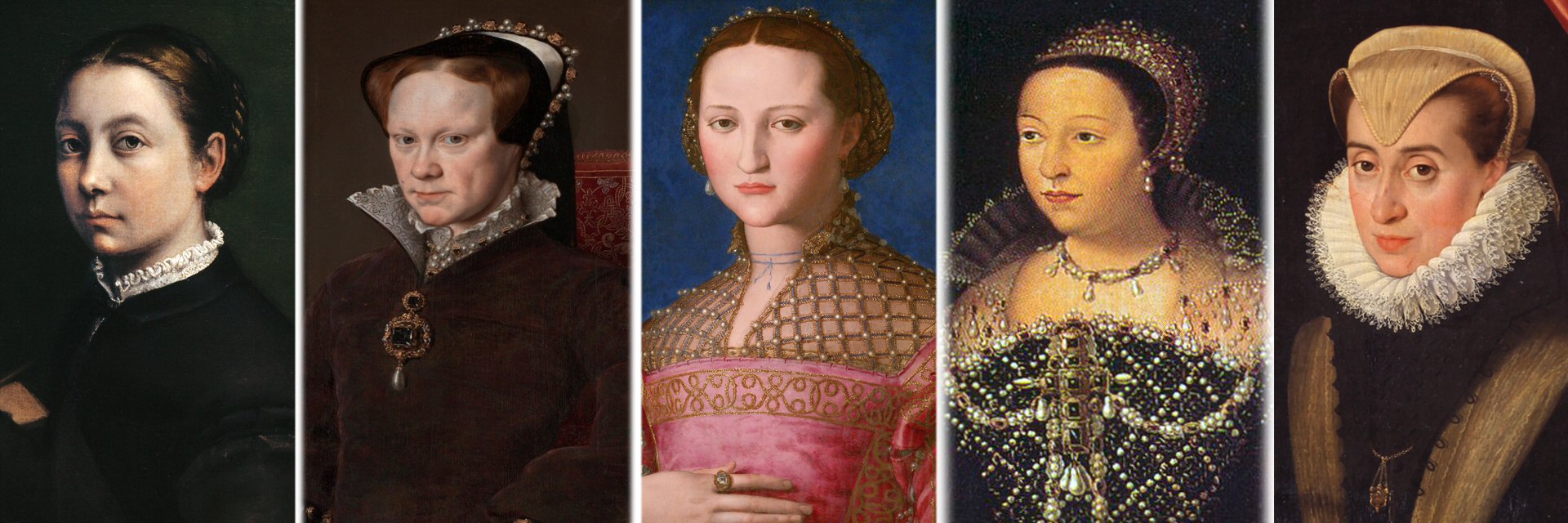
Miguel Falomir Faus
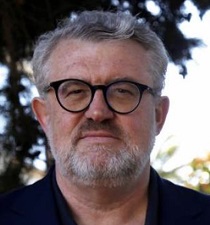 Director del Museo Nacional del Prado. En 1989 se licencia en Historia del Arte por la Universidad de Valencia, obteniendo premio extraordinario, y desde 1990 hasta 1993 es becario FPI del Ministerio de Educación y Ciencia en el Consejo Superior de Investigaciones Científicas. En 1993 se doctora en Historia del Arte por la Universidad de Valencia. Entre 1994 y 1995 disfruta de una beca Fulbright posdoctoral en el Institute of Fine Arts de la Universidad de Nueva York. Asimismo, es profesor titular en el Departamento de Historia del Arte de la Universidad de Valencia y en 1997 es nombrado Jefe del Departamento de Pintura Italiana y Francesa (hasta 1700) del Museo Nacional del Prado. Entre 2008 y 2010 ha sido Andrew Mellon Professor en el Center for Advanced Study in the Visual Arts de la National Gallery of Art de Washington. En el año 2015 es nombrado director adjunto de Conservación e Investigación del Museo Nacional del Prado, cargo que ostenta hasta su nombramiento como director del mismo el 17 de marzo de 2017. Es miembro del Comitato Scientifico de la Fondazione Tiziano en Pieve di Cadore (Italia) y ha sido profesor invitado en las universidades de Údine en Italia y UCLA en Estados Unidos. Entre otras exposiciones organizadas por el Museo del Prado ha sido comisario de las exposiciones: De Tiziano a Bassano. Maestros venecianos del Museo del Prado (Museu Nacional d'Art de Catalunya, Barcelona, 1997); Una obra maestra restaurada. El Lavatorio de Jacopo Tintoretto(Museo del Prado, 2000); Los Bassano en la España del siglo de oro (Museo del Prado, 2001); La restauración de El emperador Carlos V, a caballo, en Mühlberg de Tiziano (Museo del Prado, 2001); Tiziano (Museo del Prado, 2003); Tintoretto (Museo del Prado, 2007) y El retrato del Renacimiento (Museo del Prado, 2008), El último Rafael (Museo del Prado, 2012), Las Furias : alegoría política y desafío artístico (Museo del Prado, 2014) y Tiziano: Dánae, Venus y Adonis. Las primeras poesías.
Director del Museo Nacional del Prado. En 1989 se licencia en Historia del Arte por la Universidad de Valencia, obteniendo premio extraordinario, y desde 1990 hasta 1993 es becario FPI del Ministerio de Educación y Ciencia en el Consejo Superior de Investigaciones Científicas. En 1993 se doctora en Historia del Arte por la Universidad de Valencia. Entre 1994 y 1995 disfruta de una beca Fulbright posdoctoral en el Institute of Fine Arts de la Universidad de Nueva York. Asimismo, es profesor titular en el Departamento de Historia del Arte de la Universidad de Valencia y en 1997 es nombrado Jefe del Departamento de Pintura Italiana y Francesa (hasta 1700) del Museo Nacional del Prado. Entre 2008 y 2010 ha sido Andrew Mellon Professor en el Center for Advanced Study in the Visual Arts de la National Gallery of Art de Washington. En el año 2015 es nombrado director adjunto de Conservación e Investigación del Museo Nacional del Prado, cargo que ostenta hasta su nombramiento como director del mismo el 17 de marzo de 2017. Es miembro del Comitato Scientifico de la Fondazione Tiziano en Pieve di Cadore (Italia) y ha sido profesor invitado en las universidades de Údine en Italia y UCLA en Estados Unidos. Entre otras exposiciones organizadas por el Museo del Prado ha sido comisario de las exposiciones: De Tiziano a Bassano. Maestros venecianos del Museo del Prado (Museu Nacional d'Art de Catalunya, Barcelona, 1997); Una obra maestra restaurada. El Lavatorio de Jacopo Tintoretto(Museo del Prado, 2000); Los Bassano en la España del siglo de oro (Museo del Prado, 2001); La restauración de El emperador Carlos V, a caballo, en Mühlberg de Tiziano (Museo del Prado, 2001); Tiziano (Museo del Prado, 2003); Tintoretto (Museo del Prado, 2007) y El retrato del Renacimiento (Museo del Prado, 2008), El último Rafael (Museo del Prado, 2012), Las Furias : alegoría política y desafío artístico (Museo del Prado, 2014) y Tiziano: Dánae, Venus y Adonis. Las primeras poesías.
Bruce Edelstein

Bruce Edelstein es Coordinador de Programas de Posgrado e Investigación Avanzada en NYU Florencia, donde enseña historia del arte y ejerce como asesor para la planificación académica. Es profesor en el departamento de estudios italianos de NYU Nueva York. Obtuvo su doctorado en la Universidad de Harvard en 1995, con una investigación basada en el patrocinio de la duquesa de Florencia, Leonor de Toledo; reflejo de su interés por los sistemas de patrocinio en la corte y el ejercicio de la autoridad femenina en el Renacimiento y la Italia de época Moderna. Ha ejercido como docente en el Florida State University Florence Study Center, en la Universidad de Syracusa en Italia y en la Escuela de Harvard University Graduate School of Design, ha desempañado el puesto de conservador en el Museo de Bellas Artes de Boston y en el Museo Fogg en Cambridge, Massachusetts. Durante el año académico 2001-2002, fue miembro del Centro de Estudios del Renacimiento Italiano de la Universidad de Harvard en Villa I Tatti. En 2014, fue nombrado miembro honorario de la Accademia delle Arti del Disegno di Firenze, mientras que en 2015-16, fue becario invitado en el Kunsthistorisches Institut en Florencia. Sus publicaciones incluyen: artículos sobre la biografía, iconografía y mecenazgo artístico de Leonor de Toledo; estudios sobre los jardines Medici en el siglo XVI; y ensayos sobre pintores y escultores de la corte Medici, como Bronzino, Cellini y Tribolo. Es co-conservador de la exposición Miraculous Encounters: Pontormo from Drawing to Painting, celebrada en el Palazzo Pitti de Florencia, la Biblioteca y Museo Morgan en Nueva York, y el Museo J. Paul Getty en Los Ángeles en 2018-2019. Es uno de los principales autores del catálogo de la exposición “Omaggio a Cosimo I: La prima statua per Boboli. Il Villano e la sua botticella”llevada a cabo en el Palazzo Pitti de Florencia en 2019. Está finalizando un libro sobre la historia temprana de los Jardines de Boboli bajo el patrocinio de Leonor de Toledo.
Almudena Pérez de Tudela
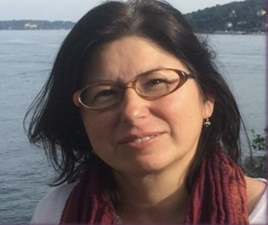
Curator of the Royal Monastery of El Escorial (National Heritage) since 2002. She started her postgraduate studies with the project ‘La imagen de Felipe II y su reinado en las medallas’ defended in 2002. She is currently finalising her doctoral studies about Cardinal Granvela (1517-1586) and his role as an artistic and cultural patron for the House of Austria. After working for museums like the Museum of National Decorative Arts in Madrid and the Prado Museum, where she collaborated as a medalist in the exhibition Felipe II. Un príncipe del Renacimiento (1998), she has been the curator for the Royal Monastery of El Escorial in the Department of Royal Collections in National Heritage (Patrimoino Nacional) since 2002. She has focused her research on patronage and art collection studies in the court of Phillip II paying special attention to topics such as portraiture, portrait painters, and portrait galleries in this period. In 2017, she published the inventories of Joan of Austria (1535-1573), the king’s younger sister. She has received many postdoctoral grants and she has collaborated in numerous exhibitions such as Felipe II. Un príncipe del Renacimiento (Prado Museum, 1998); and since 2003, in most exhibitions organised by National Heritage of Spain. Recently, she has collaborated in the exhibitions Historia de dos pintoras: Sofonisba Anguissola y Lavinia Fontana (Prado Museum, 2019), and La otra Corte. Mujeres de la Casa de Austria en los Monasterios Reales de las Descalzas y la Encarnación (National Heritage, 2019).
Joanna Woods-Marsden

Served from 1984-2010 Joanna Woods-Marsden is a current Research Professor and served as Professor of Art History at UCLA from 1984 until her retirement in 2010, during which time she led the department in the field of Renaissance studies. In addition to her work as an advisor, she produced vital scholarship to the study of court art and Renaissance portraiture through such publications as Renaissance Self-Portraiture: The Visual Construction of Identity and the Social Status of the Artist (Yale University Press, 1998). Her current research is devoted to a book investigating Gendered Identity in Titian’s Court Portraits. Contact: jwm@humnet.ucla.edu.
Sheilla Ffoillott
Sheila Ffolliott taught art history at Mason from 1978-2009. She was also Chair of the Art Department and the Art History Department and Coordinator of Art History within the Department of History and Art History.
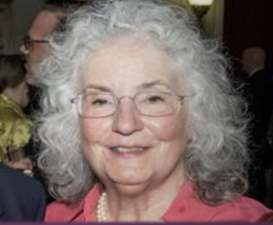
Recent publications include “Cosimo I and Catherine de’ Medici: Cousins and Rulers” for the Brill’s Companion to Cosimo I de’ Medici, forthcoming; “Artemisia Conquers Rhodes: Problems in the Representation of Female Military Heroics in the Age of Catherine de’ Medici” in Patronage, Gender & the Arts in Early Modern Italy: Essays in Honor of Carolyn Valone, eds. McIver and Stollhans (New York: Italica Press, 2015; “Women Artists” in the Ashgate Research Companion to Women and Gender in Early Modern Europe, eds. Couchman, McIver, and Poska (Farnum: Ashgate, 2013); “Tapestry” for The Cambridge Shakespeare Encyclopedia, Volume I: Shakespeare’s World, ed. B. R. Smith; Introduction,” to Women Patrons and Collectors, eds. Bracken, Gáldy, and Turpin (Cambridge Scholars Press, 2012); “La Florentine” or “La bonne Françoise?” Some Sixteenth-Century Commentators on Catherine de’ Medici and her Patronage in Artful Allies: Medici Women as Cultural Mediators, ed. Strunck (Silvana Editoriale, 2011); “Catherine de’ Médicis: La Reine-Patronne Ideale de la Rénaissance?” in Les Femmes et les arts à la Renaissance: Patronnes et mécènes, d’Anne de France à Catherine de Médicis, ed. Wilson-Chevalier (Paris: Université de Saint-Étienne, 2007; “Learning to Be Looked at: The Portrait of [The Artist as] a Young Woman in Agnès Merlet's Artemisia,” in Reclaiming Female Agency: Feminist Art History after Postmodernism, eds. Broude and Garrard (University of California Press, 2005).
She has lectured widely here and abroad, delivering two conference keynote addresses (1997 and 2012) and plenaries at the annual meetings of the Renaissance Society of America (2006) and the Sixteenth Century Conference (2007).
Dr. ffolliott serves currently as President of the American Friends of Attingham and is a Trustee of the Medici Archive Project, and a former Board Member of the National Museum of Women in the Arts and the Jerome Foundation. She guest curated an exhibition at the Minneapolis Institute of Arts, Images of a Queen’s Power: The Artemisia Tapestries 1993 and served on the committee for the exhibition Italian Women Artists: Renaissance to Baroque (exhibition), National Museum of Women in the Arts, Washington, 2007. The Society for the Study of Early Modern Women presented her with a Lifetime Achievement Award in 2014 and her scholarship has received support from the National Endowment for the Humanities, the Folger Shakespeare Library, The Bunting Institute, and the Center for Advanced Study in the Visual Arts at the National Gallery of Art.
Mía Rodríguez-Salgado

BA in History from Durham University and Ph D in History from the University of Hull, she started lecturing at the University of St Andrews, Scotland in 1979, and then in Newcastle University, transferring to the Department of International History at the London School of Economics in 1985. She became a Professor in International History in 1996. She was a consultant in the exhibition about the Spanish Armada in 1988 and collaborated in other exhibitions later on. She has also participated in several documentaries on television and on the radio. Her research and many of her published works are focused on international political studies and elements of the history of the courts of Charles VI and Phillip II. Amongst her published works are:
- The Changing Face of Empire: Charles V, Philip II and Habsburg Authority 1551-1559, Cambridge, 1988. On-line reprint from 2008. Spanish edition: Un Imperio en Transición. Carlos V, Felipe II y su mundo, Editorial Crítica, Barcelona, 1992. Italian edition: Metamorfosi di un Impero. La Politica Asburgica da Carlo V a Filippo II (1551-1559), Vita e Pensiero, Milan, 1994.
- The Official Catalogue of the National Maritime Museum Exhibition (With contributions from the staff of the National Maritime Museum; London, 1988.
- Edited with Dr. Simon Adams, England, Spain and the Gran Armada, 1585-1604. Essays from the Anglo-Spanish Conferences, London and Madrid 1988, Edinburgh, 1991.
- Felipe II. El «Paladín de la Cristiandad» y la Paz con el Turco, Salamanca, 2004. «Síntesis» XI Collection.
- 'The Court of Philip II of Spain' in R. Asch and A.M. Birke (eds.), Princes, Patronage and the Nobility. The Court at the Beginning of the Modern Age c.1450-1650, The German Historical Institute, London, and Oxford University Press, (1991), pp.205-244.
- 'Honour and profit at the court of Philip II of Spain', in M. Aymard & M. Romani (eds.) La Cour comme Institution Economique. (Éditions de la Maison Des Sciences de l'Homme, Paris, 1998, pp, 67-86.
- 'Charles V and the dynasty', in H. Soly (ed.), Charles V. 1500-1558, pp. 27-111. (English edition, Mercatorfonds, Antwerp, 1999). Also, in French and Dutch editions, 1999. Spanish and German editions 2000.
- 'King, Bishop, Pawn? Philip II and Granvelle in the 1550s and 1560s', in K. De Jonge, G. Janssens (eds.), Les Granvelle et les Anciens Pays-Bas, Leuven, 2000, pp.105-134.
- ‘"Una Perfecta Princesa" Casa y vida de la reina Isabel de Valois (1559-1568). Primera Parte.', in C. Gómez-Centurión Jimenez (ed.), Monarquía y Corte en la España Moderna, Monografías de Cuadernos de Historia Moderna, Anejo II, Madrid, 2003, pp.39-96. Also in:
http://www.ucm.es/BUCM/revistas/ghi/02144018/articulos/CHMO0303220039A.PDF
- ‘"Una Perfecta Princesa" Casa y vida de la reina Isabel de Valois (1559-1568). Segunda Parte.', in Cuadernos de Historia Moderna, 28, (2003) pp.71-98. Also in:
http://www.ucm.es/BUCM/revistas/ghi/02144018/articulos/CHMO0303120071A.PDF
Dagmar Eichberger
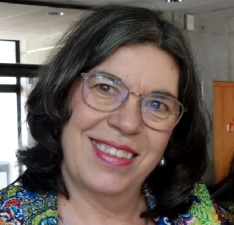
Dagmar Eichberger is apl. Professor of Art History at the University of Heidelberg. Her first research project focused on Jan van Eyck's early career as a court artist (Jan van Eyck als Erzähler. Frühe Tafelbilder im Umkreis der New Yorker Doppeltafel, with Hans Belting and Bildkonzeption und Weltdeutung im New Yorker Diptychon des Jan van Eyck, 1987). Teaching appointments in Australia, Germany and France sharpened her profile as a specialist in Northern Renaissance Art. From 2011 to 2016, she held a teaching position at the University of Trier and worked as scientific coordinator for the ERC artifex project. Her habilitation on Margaret of Austria as collector and patron of the arts was published in 2002 (Leben mit Kunst – Wirken durch Kunst). It was followed by an international exhibition that was accompanied by an edited handbook (Women of Distinction. Margaret of York and Margaret of Austria, 2005). The Mechelen Conference proceedings were published under the title: Femmes à la Cour de Bourgogne. Présence et influence (with A.-M. Legaré). She joined two J. P. Getty collaborative research projects that dealt with Mencia de Mendoza and with early Habsburg collections (Fernando Checa, ed., The Inventories of Charles V and the Imperial family, 3 vols.).
In 2015, a collection of essays was published with co-editor Jennifer Spinks (Religion, the Supernatural and Visual Culture in Early Modern Europe: An Album Amicorum for Charles Zika); another edited volume is in print: The artist between court and city (1300-1600). L'artiste entre la cour et la ville. Der Künstler zwischen Hof und Stadt, with Philippe Lorentz). Her strong interest in the Old Testament and in the concept of typological thinking finds its expression in another volume of essays, edited with Shelley Perlove (Visual Typology in early Modern Europe. Continuity and Expansion, due 2017)
Fernando Checa Cremades
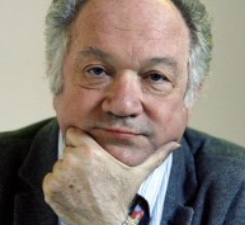
He is Professor of the Department of Art in the Complutense University of Madrid. He was Director of the Prado Museum from 1996 to 2001. PhD in Philosophy and Arts (Art History specialisation) from the Complutense University of Madrid and BA in Law. In 1981 he was granted the PhD Extraordinary Prize and in 1993 the Spanish National History Award. He started lecturing in 1976 in the Complutense University of Madrid where he has been a Professor since 1999. He was
- Summer Visiting Professor in the Institute of Advanced Studies in Princeton in 1988.
- Pau Melon Senior Fellow in the Center of Advance Studies in Visual Arts in the National Gallery of Art in Washington in 1989.
- Fae Norton Professor in the Oklahoma State University in 1995.
- Visiting professor in the University of Geneve in 2005.
As a researcher, he has participated in several international research projects funded by France, Austria, the Council of Europe, and United States. Of particular note is the Getty Grant Project for the study of the artistic inventories of Charles V and his family, financed by the Getty Foundations and the Prado Museum.
His field of study spans, fundamentally, Renaissance and Baroque art, with special attention to collections and royal art patronage in Spain in the Sixteenth and Seventeenth Centuries, as well as the artistic relations of the Spanish Monarchy with other European courts in that era.
The following published works are notable:
- Pintura y escultura del renacimiento en España, 1983.
- Carlos V y la imagen del héroe en el renacimiento, 1987.
- La imagen impresa en el renacimiento y el manierismo, (1st part of the XXXI volume of the collection «Summa Artis»).
- Felipe II, mecenas de las artes, 1992.
- Tiziano y la monarquía hispánica. Usos y funciones de la pintura veneciana en España. Siglos XVI y XVII(1994), Las maravillas de Felipe II, 1998.
- Carlos V. La imagen del poder en el renacimiento, 2000.
- El emperador Carlos v, a caballo, en Mühlberg, de Tiziano, 2002.
He has curated different exhibitions dedicated to art in the House of Austria in Spain and Spanish Renaissance art. The most outstanding are:
- Reyes y mecenas. Los Reyes Católicos, Maximiliano I y los inicios de la Casa de Austria en España, Toledo-Innsbruck, 1992.
- El Real Alcázar de Madrid. Dos siglos de arquitectura y coleccionismo en la corte de los reyes de España, Madrid, 1994.
- Dos siglos de relaciones culturales entre Amberes y Madrid, Madrid, 1995.
- Felipe II. Un monarca y su época. Un príncipe del renacimiento, Prado Museum, 1998-199.
- Carolus, Toledo, 2000-2001.
- Tiziano-Rubens, Venus ante el espejo, Madrid, 2002.
- Cortes del barroco. De Bernini y Velázquez a Luca Giordano, Madrid-Roma, 2003-2004.
- Isabel la Católica (la magnificencia de un reinado, Valladolid, Medina del Campo, Madrigal de las Altas Torres, 2004.
He’s recently curated
- La otra Corte. Mujeres de la Casa de Austria en los Monasterios Reales de las Descalzas y la Encarnación, Madrid, 2019.
David García Cueto
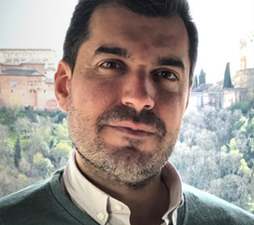
Dr. David García Cueto lectures in Art History in the Department of Art History in the University of Granada. His main line of research in based on the artistic relationship between Italy and Spain in the Seventeenth Century and he has published several articles in prestigious journals like
- Archivo Español de Arte
- Sculpture Journal
- Goya
- Portuguese Studies Review
- Storia dell’Arte.
He’s the author of works like
- Seicento boloñés y Siglo de Oro español, Madrid, 2006.
- Claudio Coello, pintor, Madrid, 2016.
In 2007, he started his research on Philip IV of Spain’s ambassador in Rome. He is currently head of the research project Copimonarch.
Copies of Paintings in the Hispanic Monarchy (16th to 18th Centuries). Furthermore, has participated as a researcher in other projects such as
- “Prospettive architettoniche, conservazione digitale, divulgazione e studio”, directed by professor Riccardo Migliari of the University of Rome La Sapienza.
- “El arte granadino de la Edad Moderna en el contexto europeo” (HAR 2009-12798), directed by Policarpo Cruz Cabrera (UGR), between 2009-2012.
He’s carried out research stays in
- Spanish School of History and Archaeology (EEHAR), Roma, 2008 and 2012.
- National Institute of Art History INHA, Paris, 2009.
He’s been guest lecturer in
- University of Rome La Sapienza, Roma, 2006.
- University of Geneva, 2009.
- Collège de France, Paris, 2015.
- University of Ottawa, 2016.
He is a scientific evaluator in important journals such as
- RIHA
- Portuguese Studies Review
- Archivo Español de Arte
- Sculpture Journal
- Revista de Arte.
Vanessa de Cruz Medina
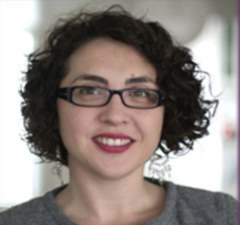
She holds a PhD in History from the Complutense University of Madrid – with the dissertation titled “Cartas, Mujeres y Coret en el Siglo de Oro”- she has been a Juan de la Cierva postdoctoral grant holder in the Foundation Carlos de Amberes and Melon Visiting Fellow in the prestigious Villa I Tatti, The Harvard University Center for Italian Renaissance Studies.
Her main lines of research are focused on the social, political, and cultural history in the court of Madrid during the Sixteenth and Seventeenth Centuries, paying special attention to the women in the Habsburg dynasty and the ladies that served in the households of queens, princesses, and infantas. She has specialised in the study of the written correspondence of women at court, females patronage networks and art patronage as well as the political and cultural relations between the Spanish Monarchy, the Holy Roman Empire and Italy.
She has published several noteworhy works including:
- Una dama en la corte de Felipe II: cartas de Ana de Dietrichstein a su madre, Margarita de Cardona, Charles University in Praga, forthcoming.
- “An Illegitimate Habsburg: Ana Dorotea de la Concepción, Marquise of Austria (1611-1694)”, in A. J. Cruz, M. Galli Stampino (eds.), Early Modern Habsburg Women: Transnational Contexts, Cultural Conflicts, Dynastic Continuities, London/New York, 2013, pp. 96-117.
- “‘In service to my Lady, the Empress, as I have done every other day of my life’: Margarita de Cardona, Baroness of Dietrichstein and Lady-in-Waiting to Maria of Austria”, in N. Akkerman, B. Houben (eds.), The Politics of Female Households: Ladies-in-waiting across Early Modern Europe, Leiden, 2014, pp. 99-119.
- “Private correspondence”, in N. Baranda y A. J. Cruz (eds.). The Routledge Research Companion to Early Modern Spanish Writers, London/New York, 2017, pp. 285-295.
She was a member of the Executive Committee of the Association for Spanish and Portuguese Historical Studies (ASPHS) from 2015 to 2017, and secretary of the journal Litterae. Cuardernos sobre Cultura Escrita, as well as of the book collection Biblioteca Litterae. In her academic career she has participated in the organization of numerous conferences and seminars and has been a member in several research projects and teams. She was the scientific coordinator of the cultural project “Tapices flamencos en España” (www.flandesenhispania.org).
Noelia García Pérez
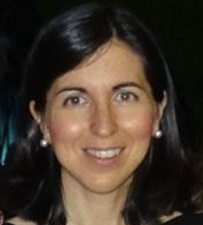
Noelia García Pérez is an Associate Professor in Art History at the University of Murcia (Spain) where she engages both areas -art history and women’s and gender studies- in her research and teaching.
She received her Ph.D. in Art History at the University of Murcia in 2004, with a dissertation on the rich and varied collection amassed by the sixteenth-century collector, Mencía de Mendoza Marquesa del Zenete.
Since then, her main research interests have been focussing on gender, cultural and artistic patronage in the early modern period. Her book, Arte, Poder y Género. El patronazgo artístico de Mencía de Mendoza (2004) explores a ruling noblewoman’s patronage and collecting practices and the ways she acted as a cultural ambassador between Spain and The Low Countries in the Renaissance. She is also author of Miradas de Mujeres: El patronazgo femenino y el arte del Renacimiento (2004) where she examines women's roles in renaissance art patronage and how through these roles women could access to High Culture of the Renaissance. Her articles and book chapters on female artistic patronage have been published in journals such as Goya, Women’s History Review, The book collector, ARBOR or Early Modern Women. An interdisciplinary Journal. Her research has been supported by fellowships and grants from the Ministry of Arts and Culture of Spain and Museo Nacional del Prado.
Currently, she is working on the direction of several collectives on the artistic patronage of Mary of Hungary (Mary of Hungary, Renaissance Patron and Collector: Gender, Art and Culture, Brepols, forthcoming), Juana of Austria (The Making of Juana of Austria: Gender, Art, and Patronage in Early Modern Iberia, Louisiana State University Press, forthcoming) and Isabel of Castile and her daughters: the artistic patronage of the las Trastamara (Editum, forthcoming)
Sergio Ramiro Ramírez
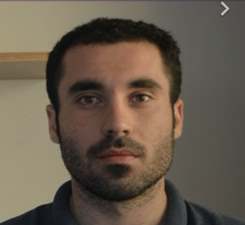
He holds a BA in Art History from the University of Jaen and has carried out graduate studies in the Complutense University of Madrid. In 2018 he obtained an International PhD in the latter for his thesis project Patronazgo y usos artísticos en la corte de Carlos V: Francisco de los Cobos y Molina. In the course of his graduate studies, he was awarded several grants from the Fondazione di Studi di Storia dell’Arte Roberto Longhi in Florence and from the Student Residence in Madrid as well as the FPU contract in the Department of Art History in the Complutense University of Madrid, where he is currently an honorary collaborator.
He is the author of several papers and chapter books on art in the European courts in the Sixteenth Century, and, he is currently undertaking the preparation of a book about his doctoral research findings. He has participated in seminars and conferences in many institutions in Spain, Portugal, and United States. Moreover, hesis part of the work group in the R&D project ‘Femenino Singular: las mujeres y las artes en la corte española de la Edad Moderna’ and a member in the R&D project UCM “La Corte española: arte, artistas y mecenas”.
His research lines are articulated around the artistic uses in the Early Modern courts. Namely, he studies the artistic patronage of the members of the royal household and members of the nobility in the Spanish Monarchy, the political instrumentalization of the works commissions and works of art in the Sixteenth Century as well as the female artistic agenda in this same era.







